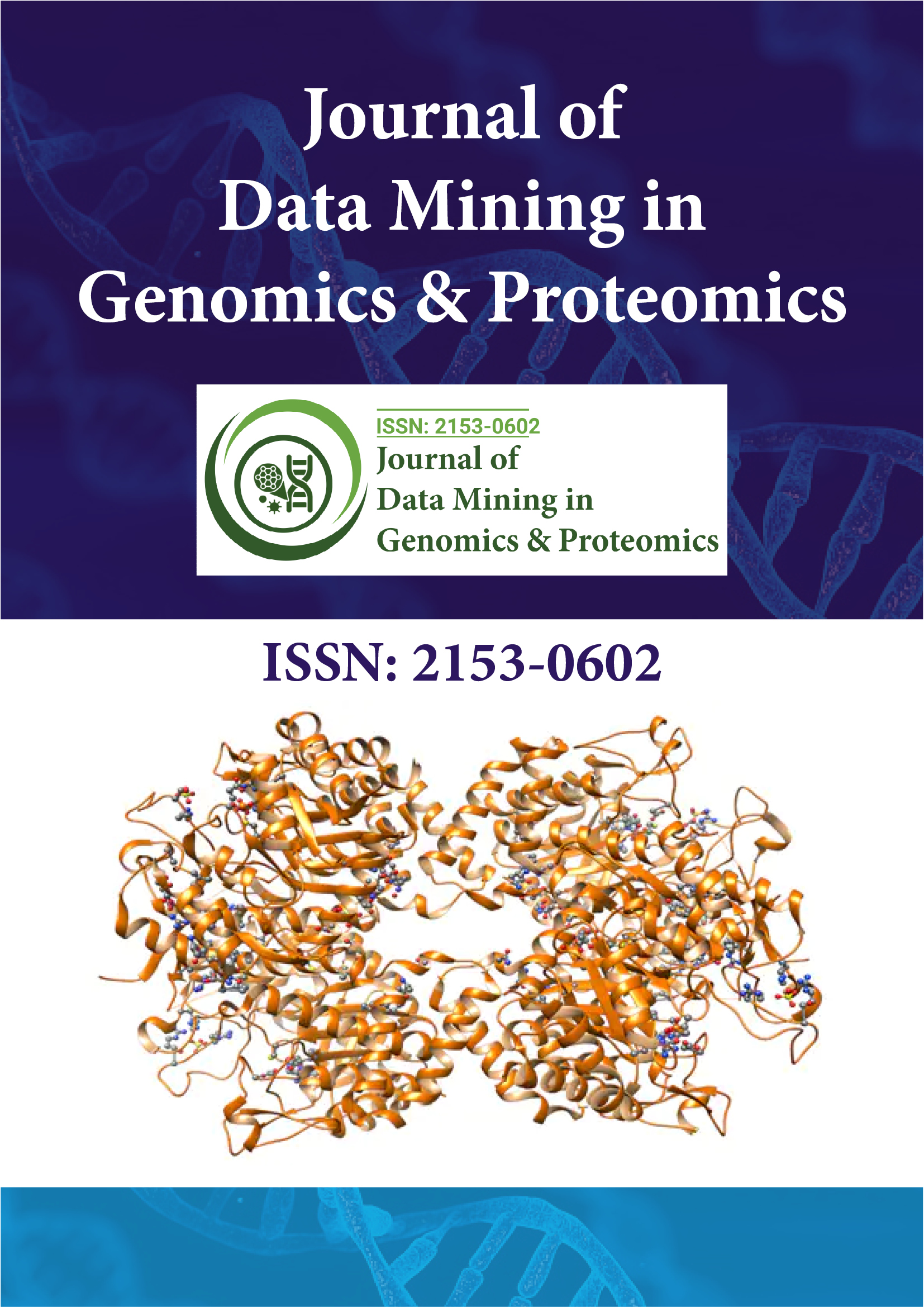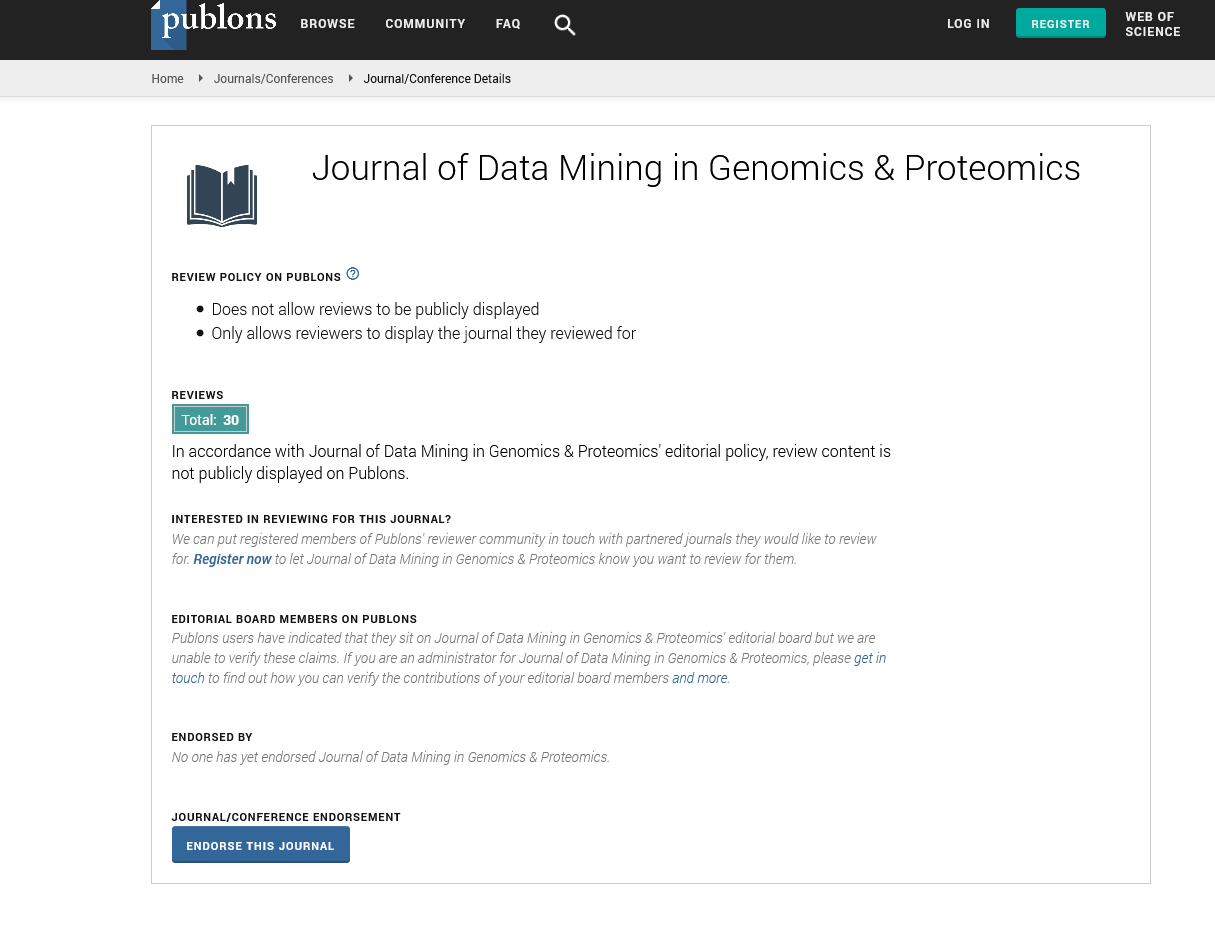PMC/PubMed Indexed Articles
Indexed In
- Academic Journals Database
- Open J Gate
- Genamics JournalSeek
- JournalTOCs
- ResearchBible
- Ulrich's Periodicals Directory
- Electronic Journals Library
- RefSeek
- Hamdard University
- EBSCO A-Z
- OCLC- WorldCat
- Scholarsteer
- SWB online catalog
- Virtual Library of Biology (vifabio)
- Publons
- MIAR
- Geneva Foundation for Medical Education and Research
- Euro Pub
- Google Scholar
Useful Links
Share This Page
Journal Flyer

Open Access Journals
- Agri and Aquaculture
- Biochemistry
- Bioinformatics & Systems Biology
- Business & Management
- Chemistry
- Clinical Sciences
- Engineering
- Food & Nutrition
- General Science
- Genetics & Molecular Biology
- Immunology & Microbiology
- Medical Sciences
- Neuroscience & Psychology
- Nursing & Health Care
- Pharmaceutical Sciences
Opinion Article - (2022) Volume 13, Issue 6
Identification and Characterization of Bacteriocin Gene Clusters in Gut
Merry Ross*Received: 04-Nov-2022, Manuscript No. JDMGP-22-18814; Editor assigned: 07-Nov-2022, Pre QC No. JDMGP-22-18814 (PQ); Reviewed: 21-Nov-2022, QC No. JDMGP-22-18814; Revised: 28-Nov-2022, Manuscript No. JDMGP-22-18814 (R); Published: 05-Dec-2022, DOI: 10.4172/2153-0602.22.13.271
Description
Although certain ruminal bacterial species are known to generate antimicrobial peptides, most screening techniques have relied on in vitro experiments conducted using standardized techniques. The genomic sequences of hundreds of ruminal bacteria have been made public thanks to recent sequencing studies. In order to ascertain the location and variety of bacteriocin gene clusters, we performed genome mining on the entire and incomplete genome sequences of 224 ruminal bacteria and 5 ruminal archaea. 33 ruminal bacterial strains had a total of 46 bacteriocin gene clusters. Twenty gene clusters were involved in lanthipeptide biosynthesis, whereas 11 clusters were involved in the manufacture of sactipeptide, 7 clusters in the production of class II bacteriocin, and 8 clusters in the production of class III bacteriocin.
There were 14.4% of strains with genomes that encode potential antimicrobial peptide precursors. For the first time, clusters of ruminal bacteria involved in sactipeptide synthesis were discovered. The bulk of the gene clusters (88%) expressing putative lanthipeptide contained all the necessary genes needed for lanthipeptide production, according to BLAST analysis. The majority of Streptococcus strains (66.6%) also included an open reading frame encoding a putative class II bacteriocin in addition to full lanthipeptide gene clusters. In this study, all of the Ruminococcus albus strains examined had proteins similar to albusin B. The rumen microbiota may be a neglected source of antimicrobial peptides since the in silico study revealed new biosynthetic gene clusters in bacterial species not previously associated with bacteriocin synthesis.
Initially classified as commensal, the connection between the gut bacteria and their host is now well known to be mutualistic and advantageous to both parties. There are several ways to quantify how the microbiome benefits the host. The microbiota, for instance, participates in a variety of metabolic processes, including the biotransformation of conjugated bile salts, the breakdown of indigestible fibres, and the creation of vitamins, including B12 and K. Additionally; it plays a tropic role in the maturation of the immunological response and favours the growth of microvilli in the intestinal epithelium. The colonization-resistance of the gut microbiota against harmful bacteria is one of its most significant functions. The capacity to create antimicrobial substances like bacteriocins is essential among the several processes that may be implicated in this barrier effect.
The category of antimicrobials known as bacteriocins is diverse and uses a variety of processes for bacteriocin modification, transport, and immunity. We can identify the kinds of bacteriocins that lactobacilli can synthesise by in silico analysis. In order to analyse the diversity of the bacteriocins expressed by lactobacilli, each strain's genome was first screened in silico, and then each strain that encodes a bacteriocin was tested in vitro to look for antimicrobial activity against a variety of markers. We were able to identify the mass and, consequently, the identification of the bacteriocins generated by the strains thanks to MALDI TOF MS and SDS PAGE.
Bacteriocins are proteinaceous compounds produced by ribosome synthesis that are often active against closely related organisms. All lineages of bacteria and archaea produce them, making them one of the most varied and plentiful groups of antimicrobials. Their biosynthetic genes are frequently connected to mobile genetic elements like plasmids or transposons. The producer strain's Gram staining is the primary criterion for categorising bacteriocins. Since Klaenhammer's hypothesis, bacteriocins generated by Gram-positive bacteria, particularly those produced by lactic acid bacteria, have been thoroughly investigated and their categorization has been frequently changed. It was suggested to separate four major groupings, even though this is disputed. Class I lantibiotics are heat-stable, low molecular mass peptides (5 kDa) with unique lanthionine or -methyllanthionine amino acid residues that have undergone post-translational modification. Small (10 kDa), heatstable, and unmodified peptides make up class II bacteriocins. Large heat-labile proteins with bacteriolytic activity (class IIIA) or nonlytic antimicrobial proteins make up class III bacteriocins (class IIIB). A last category of bacteriocins is class IV, which consists of cyclic peptides with covalently connected N- and Ctermini.
Citation: Ross M (2022) Identification and Characterization of Bacteriocin Gene Clusters in Gut. J Data Mining Genomics Proteomics. 13:271.
Copyright: © 2022 Ross M. This is an open access article distributed under the terms of the Creative Commons Attribution License, which permits unrestricted use, distribution, and reproduction in any medium, provided the original author and source are credited.

